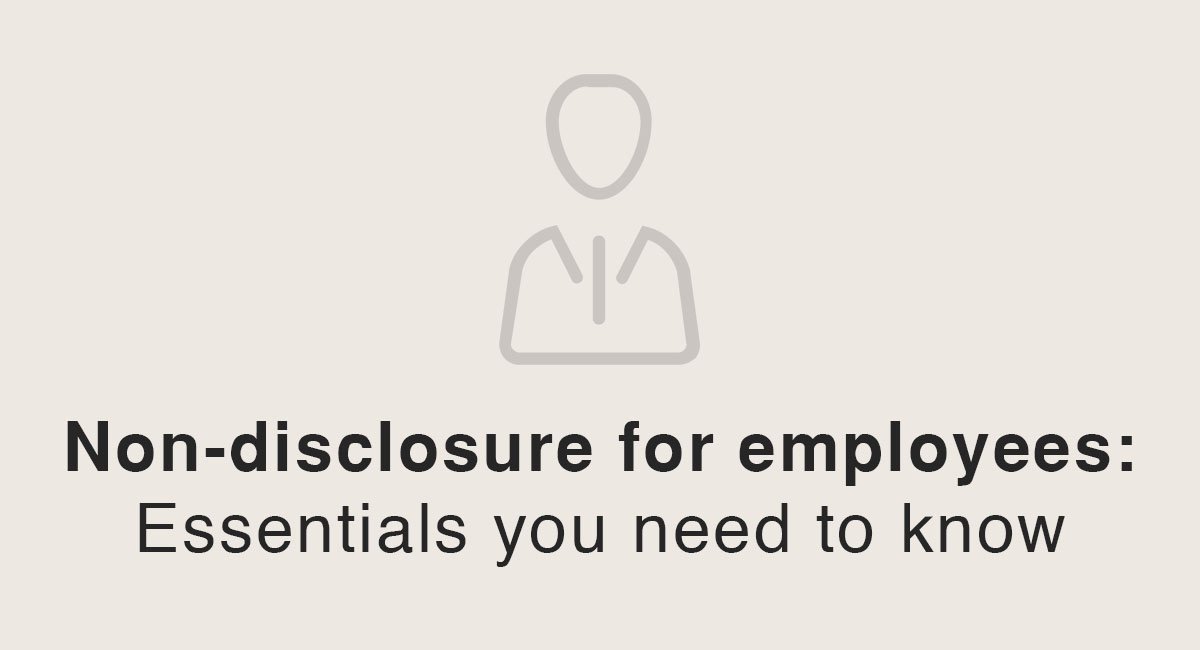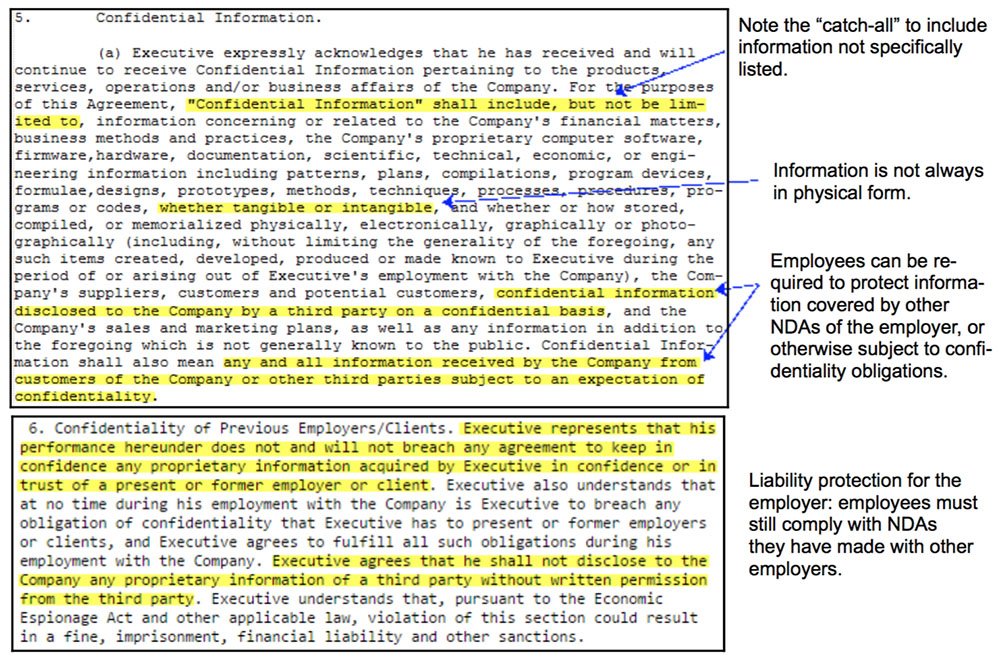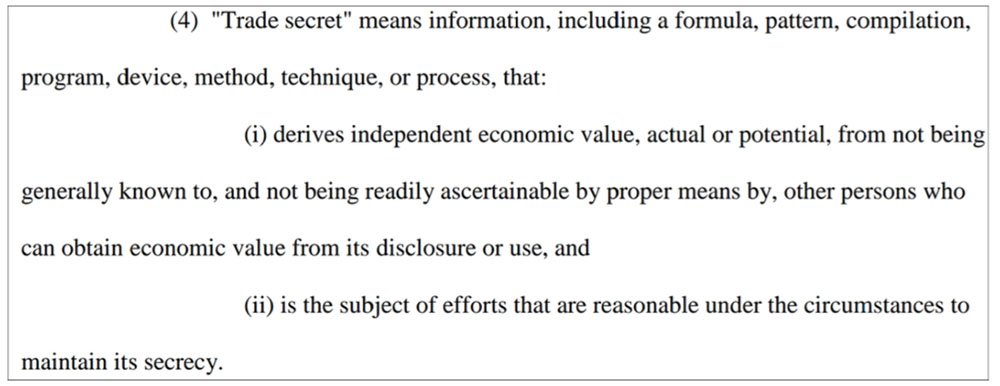Non-disclosure for employees: Essentials you need to know

When you disclose your company’s confidential information to people outside the organization, having a non-disclosure agreement in place is a good policy to have.
But what about the confidential information in the hands of people on the inside? Your company’s current managers and employees may need access to your trade secrets, intellectual property, customer lists and other sensitive data.
Contents
The loss of that kind of confidential information by any of them can be just as harmful as if a stranger had given it away.
Do you already have a non-disclosure agreement signed by your employees? If you do, how do you know that your confidential information if protected properly? If you don’t have the agreement, what do you need to do to create the non-disclosure for your employees?
What about new employees? How would your company’s policy on protecting confidential information fit as part of their employment agreements?
Most non-disclosure agreements are related to the other agreements you may already use with your employees, such as the non-competition or the independent contractor agreement. Many employment contracts include a mixture of non-compete clauses and confidentiality obligations in a single agreement.
Using non-disclosure for employees
Unless you do business as a sole proprietorship, there’s a good chance that you work with employees.
These individuals – whether they are sales people managing your existing clients, or senior managers negotiating for new business, or equipment operators on the shop floor who manufacture parts for different customers according to their unique specifications – can all become sources of information leaks while hired by your company and even afterthey leave your company.
Any unauthorized disclosure of sensitive information by current or former employees of your company is a threat to the competitiveness, profitability and maybe even survival of your company.
Most unauthorized disclosures of confidential information are accidental. These disclosures can result from ignorance, confusion or misunderstanding about what needs to be protected, when and for how long.
In this sense, non-disclosures agreements for employees (new or old hires) are like insurance — only more so.
Your business insurance policies help you recover from equipment losses, for example. Similarly, these kind of agreements provide a way to recover from unauthorized disclosures.
Non-disclosures agreements serve a preventive purpose as well as a corrective one: the agreements remind employees of the need to protect certain information, and of the possible consequences if that confidential information falls into the wrong hands.
There’s another similarity between these agreements and insurance: just like you cannot buy insurance coverage to cover an accident after it happens, having an employee sign a non-disclosure agreement after an unauthorized disclosure occurred is ineffective.
What to include in the agreement
A non-disclosure agreement has the same basic requirements as any other contract or legal agreement you may draft, use and sign.
Each contract starts with 3 essentials: an offer, its acceptance, and consideration.
Using these 3 essentials of a contract, any employee non-disclosure agreements that are part of an employee contract will meet these requirements in the offer of employment, its acceptance by the future hire and the mutual exchange of obligations by your company and the new employee.
A non-disclosure agreement that’s separated from the employment contract would have its own offer, acceptance by the employee and consideration.
The other important elements of this kind of agreement include:
- Identifying the parties to an agreement. Any agreement is only enforceable against those who have entered into it, so clearly establishing who is subject to an agreement’ terms is essential.
-
Definitions. Defining the key terms of the agreement helps avoid confusion about what they mean.

For example, a precise definition of what constitutes “confidential information” reduces the risk of an employee not recognizing what are the obligations of confidentiality under the agreement.
You can build express definitions into their own separate section of the non-disclosure agreement or spread them through the agreement as needed.
-
Duration of the agreement. Employment contracts that include non-competition clauses (which are activated when the employee leaves the company) are subject to reasonable limits on how long they can last and the geographic area they apply to.
Confidentiality obligations, on the other hand, can be indefinite in duration or limited to a definite period of time.
-
Obligation to return information. Non-disclosure agreements that are signed by new employees typically require these employees to turn over all the confidential information she/he has, in both tangible and intangible forms.
In the example below, note the prohibition against emailing, faxing or otherwise sending electronic copies of confidential information “out of the company“:
-
Remedies for breach. The two most commonly used remedies for an unauthorized disclosure of confidential information by an employee are money damages (to compensate the company and to prevent the employee from gaining an “unjust enrichment”) and injunctive relief (requires the employee to return any confidential information and to cease from making any further disclosures).
In more serious cases, like disclosures that involved misconduct on the part of the employee, the company may seek exemplar (punitive) damages and it’s also possible to provide for the recovery of attorney fees.
Here’s an example of a “Remedies” clause in a typical employee agreement:




How to draft the agreement
In English-speaking countries, the development of laws on non-disclosure has its origin in the common law courts of England. A significant positive effect of this shared root is that in many Commonwealth countries, as well as United States, these laws have more similarities than differences.

Those differences are comparatively minor. For example, one Australia-based law firm, when analyzing employee non-disclosure agreements on its own website, refers to a court case decided in the US.

In the United States, the Uniform Trade Secrets Act (UTSA) governs confidential information. Virtually every US state has adopted this code into its own statutory framework for confidentiality agreements.

The main advantage of UTSA is its introduction of more certainty in negotiating, drafting, interpreting and enforcing non-disclosure agreements.
The UTSA features an extensive section, including most notably the basic definition of what a “trade secret” is:

Another consistent feature of the UTSA is its 3-year statute of limitations within which to begin legal action (the start of the time limit depends on when the breach of the confidentiality agreement took place, or when the owner of the confidential information should have known of its unauthorized disclosure).
Some companies prefer to include a marking requirement in their agreements that identifies what confidential information is:
- Any tangible information needs to be stamped or otherwise marked as confidential at the time of disclosure
- Any orally-disclosure information needs to be summarized in writing and marked as confidential information within a certain time (typically no later than 30 days after the oral disclosure).
What kind of non-disclosure agreement you need for your new employees or old, depends on your circumstances:
- If your company is large, with many employees and a HR department, it might make sense to build the non-disclosure into the new hires package (that can or can not include a non-compete agreement)
- If your company is rather small, a simple agreement might be enough
Credits: Icon Employee by Creative Stall from the Noun Project.
Jan 30, 2017 | Non-disclosure Agreements
This article is not a substitute for professional legal advice. This article does not create an attorney-client relationship, nor is it a solicitation to offer legal advice.